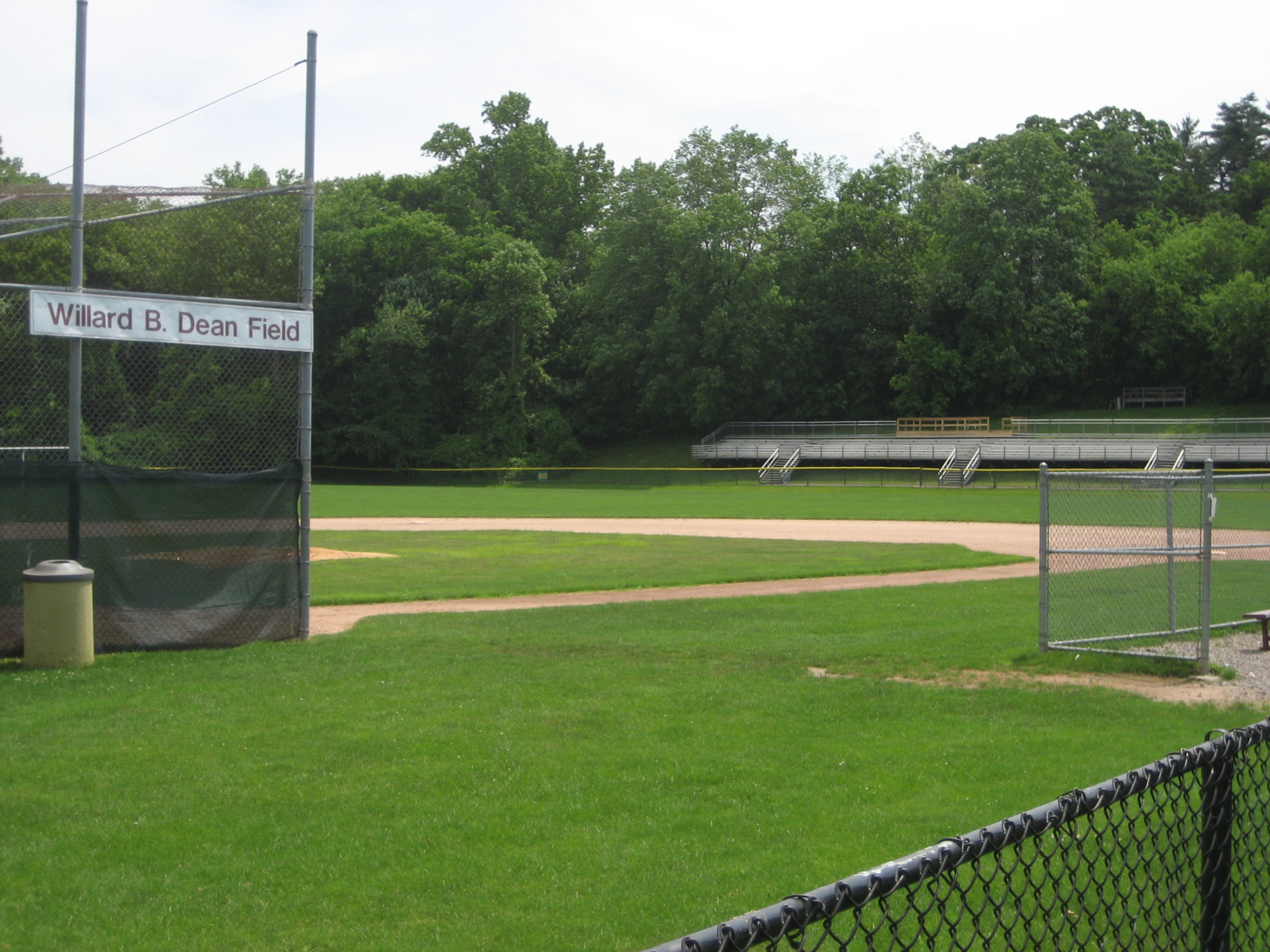Senior Cut Day: Is There a Better Way to Celebrate?
- Details
- Written by: Isabel Klein
- Hits: 10351
 For the past four years, high school seniors have stumbled into class at 8:05 AM, ready to learn whether they wanted to or not. On the morning of March 17, many seniors decided that they did not want to learn, and never did show up to class. It was senior cut day -- a rich tradition that usually falls on St. Patrick's Day when many seniors choose not to attend school.
For the past four years, high school seniors have stumbled into class at 8:05 AM, ready to learn whether they wanted to or not. On the morning of March 17, many seniors decided that they did not want to learn, and never did show up to class. It was senior cut day -- a rich tradition that usually falls on St. Patrick's Day when many seniors choose not to attend school.
Plans for the day vary. However, the most common activity is going to the St. Patrick's Day parade. Every year on St. Patrick's Day, seniors get dressed up in green and join the usual morning commuters at the Scarsdale train station.
Given the parade's reputation as being the epicenter of drunks and chaos, many parents, teachers, and administrators were concerned about students' safety. Scarsdale High School Principal Kenneth Bonamo sent out an email prior to the cut day in which he explained that the school doesn't condone the cutting. He encouraged students to steer away from the parade and wrote, "There is a widespread perception that St. Patrick's Day is 'senior cut day' and that seniors are excused from their academic and extra-curricular obligations. That is not the case ... We are concerned about the opportunity to engage in risky behavior, most notably underage drinking, that the parade presents."
In his email, Bonamo echoed many parents' concerns. However, the effect on student's choices may not have been as strong as he desired. "He was just doing his job. I don't think it changed anyone's mind or affected anyone's decision," shared senior Brian Leff.
Perhaps more potent than Bonamo's email in deterring students from cutting, however, were threats from teachers. Some teachers were more accepting towards cutting than others. Tough teachers chose to give heavily weighted quizzes on senior cut day. Students who decided to stay in school in order to take those quizzes were often disappointed to find the quizzes made up of basic questions like: "Write your name on the line" or "What book are we reading in class right now?" "The teachers shouldn't get offended and give 400 point tests on the day. It has nothing to do with respect -- it's just a tradition," expressed an anonymous senior. Many teachers refused to comment on senior cut day because they are not supposed to acknowledge its existence.
The consensus about the actual experience at the parade is exactly what most would expect: it was fun for the students to be with their friends, but the parade itself was overhyped. Drinking was definitely a component of the day for most who went to the parade. For many, alcohol consumption started at someone's house at around 9 AM. Drinking was a common theme among the senior class on senior cut day -- even for some of those who attended school.
The disciplinary measures that followed cutting were all part of the fun. Detentions were assigned -- so many, in fact, that dozens of seniors were taken to the large Little Theater in order to reflect on their wrongdoing on March 25. For many of the students present, it was their first and last detention. The energy during detention was lively, and it did not seem like many seniors regretted their cutting of classes.
The administration is so against cut day because they immediately associate the tradition with underage drinking. No one is denying that such activities do occur. Yet, not everyone went to the parade on cut day or even cut school at all. However, here's a thought: why can't senior cut day be a senior celebration day sanctioned by the school?
Bonamo should pick a day in April, when the weather is too beautiful to be sitting inside the classrooms, and organize a senior field day, picnic, or movie night. It may be true that high school students roll their eyes at school-organized events. Yet, an important concept to consider is that many students go to the parade not necessarily to pay respects to good ole St. Patrick. They instead go because everyone else is going, and it is fun to be in one place with a majority of the grade. It would likewise be fun to do anything (well, almost anything – no more SATs, please) as long as everyone is together. Of course there is prom and graduation, but a sort of "sanctioned cut day" can be special.
Seniors have less than fifty days left of high school. Given, cutting school should never be condoned, but teachers and administrators can approach the day and turn the tradition into a positive celebration, which everyone can safely enjoy. Classroom lectures are important, but in the last days of high school, spending time with those fellow classmates with whom one has trekked through the dark, awkward days of adolescence is perhaps more important. Seniors are almost there. They should finish together -- and the administration should be there with them.
Photos and quotes live from Senior Cut Day detention on 3/25:



Board Reviews Proposed 2015-16 Budget: School Taxes to Go Up 2.58%
- Details
- Written by: Melissa Hellman
- Hits: 5433
 The Board of Education formally presented the preliminary 2015-2016 budget to the community at a meeting on March 18. Overall, there was not a lot of change from what was originally presented and has been reported about on this site on February 5, February 15, March 3 and March 12.
The Board of Education formally presented the preliminary 2015-2016 budget to the community at a meeting on March 18. Overall, there was not a lot of change from what was originally presented and has been reported about on this site on February 5, February 15, March 3 and March 12.
This point in the budget development marks management transition of the process to the Board Members from the district's administrative leadership. The Board itself is no longer in an inquiry period and fully supports the budget as it was presented last night. Their goal is to make community members aware of the budget and how it supports Scarsdale's educational goals and garner support for the budget vote on May 19 2015. However, the Board stressed that it still welcomes feedback and comments and nothing is final until the budget is adopted at the April 20, 2015 meeting.
The meeting opened with Dr. Hagerman thanking the many members of the district administration who worked tirelessly over the last few months to develop the budget and respond to feedback with a special shout out to Linda Purvis who will be retiring at the end of this year. The presentation being used for the evening was developed with slides to highlight certain aspects of the budget, but also includes pictures of Scarsdale students and teachers as well as slides with quotes from the community. This presentation will be available for viewing at the BOE website. Dr. Hagerman stressed that the budget process was collaborative and iterative and supports the defined educational goals identified for the year and with an eye toward the future.
He highlighted the following points:
• The proposed 2015-16 budget preserves and enhances our student's educational experiences.
• It introduces some significant structural changes that will improve academic, athletic and social-emotional programming; district and building operations; and coordination of services with supporting organizations, institutions and agencies.
• It is aligned with the values and priorities that have been established by a broad range of stakeholders, including the BOE; administration, faculty and staff; parents and school committee; and the broader community.
• The proposal represents a year over year budget decrease. Although this was not a stated goal for this year's budget process, it is a testament to many contributors of this work.
Board President Mary Beth Gose provided a general overview of the budget. She stated that the proposed budget of $148,048,080 represents a year over year decrease of about 10%. The associated tax levy of 2.58% is under the allowable tax cap of 2.97%.
Board Member Suzanne Seiden presented on Curriculum Instruction and Assessment. This category represents less than 1% of the entire budget. She began by discussing Scarsdale's curriculum titled "Scarsdale Education for Tomorrow" and its three key components:
• Empower students to think critically and creatively
• Advance students' knowledge with globally competitive skills
• Inspire students to collaborate and make positive contributions locally and globally.
Important points about this section of the budget include traditional class sizes for K-12 will be maintained, more literacy instruction in the early grades supported by additional reading teachers and an ELA "helping teacher" (as a result the commencement of Spanish instruction is now 2nd grade), a new administrative position of Athletic Director to focus solely on Physical Education and Health programs. The Athletic Director will hire, develop and evaluate staff and provide consistent program review and improvement. This portion of the budget also includes funds staff development.
Board Member Lewis Leone addressed Special Education and began by thanking Director of Special Education Eric Rauschenbach who he called "a true gem". There is a 6.8% year-to-year budget increase requested driven by growth in out of district placements, funds for increased professional development and the purchase of common assessment tools and the addition of a Special Education teacher at the middle school due to enrollment.
Board Member Scott Silberfein discussed enrollment and staffing under the Human Resources section. He briefly reviewed enrollment projections and there is a small decrease in overall enrollment for next year (47 students). In summary, the budget proposes to maintain staffing levels at all schools (including the reorganization/hiring of some positions discussed in other sections such as Technology, Special Education, and Athletics). He concluded staff remains at 596.9 FTEs with a requested increase of .55 FTEs.
Board Member Chris Morin, who addressed Facilities, opened with a slide that depicted facilities spending over the last 11. This analysis showed what Morin described as a lot of "discipline" in facilities spending.
Important capital initiatives in the 2015-2016 budget include:
• Drainage repair at Edgewood
• Playground repair and front office renovation at Fox Meadow
• Fire alarm replacement at Heathcote
• Replacement of tech room dust collection system at the Middle School
• Repair of Dean Field and exterior painting at the High School
• District wide roof repairs, changes to the technology offices to accommodate the department reorganization, and paving the bus compound.
He concluded by looking ahead to 2016 and beyond. The approved 2014 Bond projects (not including in this budget) are the Edgewood library, Heathcote multipurpose room, Quaker Ridge roof, Middle School orchestra space, High School learning commons and improvements to district-wide technology infrastructure. Also, on going is the Greenacres feasibility study, the High School Master Plan and a five year building condition survey all of which contribute to the District Facilities Master plan.
Board Member Bill Natbony handled the Technology budget. He described the various aspects of the technology budget and the department reorganization that was fully discussed in this article (link to my piece from feb. 11 study session).
Board Member Lee Maude concluded the presentation with a brief discussion of debt service and benefits. Employee Benefits represent 27% of budget. Many benefits are mandated (retirement system contributions, social security, etc.) or negotiated as part of a contract (health and dental coverage). Our district has a self-insurance plan that has saved the district money, but can also be volatile. The district will maintain a health-care reserve fund that is now allowed as a result of recent legislation. Health-care budget is increasing 10% year over year. Maude stressed that healthcare benefits are an important part of compensation for district employees many of whom spend their entire careers within the district.
Debt services are 6.6% of total proposed budget and represent a minimal increase from last year.
Community members are encouraged to view last night's meeting on the Scarsdale School's Video on Demand sight and contact members of the Board of Education with questions and concerns.
Raiders Fall to McQuaid at Hockey Semi-Final in Utica
- Details
- Written by: Isabel Klein
- Hits: 5717
 The Scarsdale Raiders hit Utica Memorial Stadium on Saturday March 14 for the semi-final game against McQuaid and lost 2-4. Raider Duncan Hindmarch scored the first goal of the game. The score was tied 2-2 until the last period when McQuaid scored two goals against Scarsdale goalie Gabe Harousseau, who had many incredible saves throughout the game. Gasps filled the stands when Raider James Nicholas fell to the ground early during the last period, but he was able to play the rest of the game. Stand out performances came from Raiders Devon Shell and Duncan Hindmarch.
The Scarsdale Raiders hit Utica Memorial Stadium on Saturday March 14 for the semi-final game against McQuaid and lost 2-4. Raider Duncan Hindmarch scored the first goal of the game. The score was tied 2-2 until the last period when McQuaid scored two goals against Scarsdale goalie Gabe Harousseau, who had many incredible saves throughout the game. Gasps filled the stands when Raider James Nicholas fell to the ground early during the last period, but he was able to play the rest of the game. Stand out performances came from Raiders Devon Shell and Duncan Hindmarch.
 The Scarsdale Raider's Hockey Team travelled to Utica for the NYS semi-finals with high hopes and a stellar record. Boasting stats of 23-1 and an eight-game winning streak the Raiders stood at #2, just behind their rivals the McQuaid Jesuit Knights from Rochester.
The Scarsdale Raider's Hockey Team travelled to Utica for the NYS semi-finals with high hopes and a stellar record. Boasting stats of 23-1 and an eight-game winning streak the Raiders stood at #2, just behind their rivals the McQuaid Jesuit Knights from Rochester.
Buoyed by hundreds of fans, some who rode to Utica on a bus sponsored by sports booster organization Maroon and White, the team and the community thought that Scarsdale would go on to the finals.
Although the loss was devastating, the team had an amazing season, and the Scarsdale fans exited the stadium chanting, "We still love the Raiders."


Fans to Travel to Utica to Cheer on the Raiders Hockey Team on Saturday
- Details
- Written by: Isabel Klein
- Hits: 5763
 The Scarsdale High School Varsity hockey team's season long history of success has led the Raiders to Utica where they will play in the New York State Semi-Finals against the McQuaid Jesuit Knights this Saturday, March 14. With a record of 23-1 and an eight-game winning streak, the Raiders are #2 in the state behind McQuaid, who hail from Rochester, NY.
The Scarsdale High School Varsity hockey team's season long history of success has led the Raiders to Utica where they will play in the New York State Semi-Finals against the McQuaid Jesuit Knights this Saturday, March 14. With a record of 23-1 and an eight-game winning streak, the Raiders are #2 in the state behind McQuaid, who hail from Rochester, NY.
Utica is about three and a half hours away from Scarsdale, and many devoted fans are making the drive to support the Raiders. A win would send the team to the state championship -- a victory that would be especially sweet after the Raiders' 2014 loss to Ithaca at the semi-finals. "We were really disappointed with the way our season ended last year," expressed senior and Varsity hockey player Gabe Harousseau. "We know we don't want to have that feeling again and we are practicing hard this week to give ourselves the best chance possible."
The competition for a spot in the championships will be tough, but the Raiders are optimistic and ecstatic about their second chance. "It's pretty incredible to be going back to Utica because it was one of our goals at the start of the season and it is finally here," shared senior and Varsity hockey player Jake Zurkow. And the team could not have met their goal without the resolve and sacrifice of the team. "We have been working hard for 12 years for this one moment. It has always been a dream of every kid on this team to win a state championship," expressed senior and Varsity hockey player James Nicholas. "We are going to put everything we have out on that ice and hope that it is enough... all we can do is do our best."
Students who are making the trip to Utica are excited to cheer on the team and expect an eventful game. "It's so important that we are all going because the team we are playing is right near Utica so they will have a lot of fans there," expressed Scarsdale senior Carly Kahan. "Scarsdale needs all the support we can get." There was a petition for the school to provide a bus to transport fans, but as of now it is not clear if a bus will be available. Many students are carpooling and staying in local hotels overnight (the Utica Holiday Inn is almost fully booked.) "The second the last game ended all my friends booked rooms immediately -- most people didn't even have to ask their parents first," shared Scarsdale senior Julia Gerla.
Yet, parents are concerned. "I just think this whole trip is a recipe for disaster," expressed an anonymous parent of a high school student. "There are driving concerns and the possibility of hotel shenanigans. Most of the kids will be fine of course, but there is a potential for something to go terribly wrong." Despite these worries, as of now, there are 164 students who have confirmed they will attend the game via a Facebook group created for the event.
Maroon and White has arranged for a bus to transport fans to Utica.
Leave it to the impressive success of the Scarsdale hockey team to galvanize students and fans to make the hajj to Utica, New York. The road to Utica required a lot of determination and hard work from the hockey team -- and will require gallons of gas from the fans. Hopefully the Raiders will take it all the way to the state championships.
From Auschwitz Survivor to Presidents' Tailor: The Story of Martin Greenfield
- Details
- Written by: Stacie M. Waldman
- Hits: 16011
 If you think you've heard enough stories of people who survived the Holocaust, you have not heard Martin Greenfield's story. If you think you've heard enough stories of people who dress celebrities and presidents, you have not heard Martin Greenfield's story. His is a unique and powerful one: one of family, survival, sheer luck, and the belief in the greatness of America. On March 26th, Mr. Greenfield will be speaking at the JCC of mid-Westchester and you won't want to miss the opportunity to hear this man's unforgettable journey from concentration camp victim to master custom men's tailor to Hollywood A-listers and U.S. Presidents.
If you think you've heard enough stories of people who survived the Holocaust, you have not heard Martin Greenfield's story. If you think you've heard enough stories of people who dress celebrities and presidents, you have not heard Martin Greenfield's story. His is a unique and powerful one: one of family, survival, sheer luck, and the belief in the greatness of America. On March 26th, Mr. Greenfield will be speaking at the JCC of mid-Westchester and you won't want to miss the opportunity to hear this man's unforgettable journey from concentration camp victim to master custom men's tailor to Hollywood A-listers and U.S. Presidents.
I was given the honor of being invited to sit for an hour with Mr. Greenfield and hear more about his life story. I arrived at his factory in Brooklyn and was greeted by his son, Jay. Within moments, a stunningly dressed, elegant man with a big smile approached me for a firm handshake and led me to his office. There was not a computer in sight, just stacks and stacks of folders and framed pictures on every inch of wall space. I learned very quickly that the folders contained not only letters from ambassadors and university professors, but also letters from Jews and non-Jews around the world that had been affected by his story.
Although the questions I came prepared to ask reflected the style of his book, (half about his time in concentration camps during the Holocaust and half about his success as a master tailor to celebrities,) I quite quickly put down my notes and just listened. All Mr. Greenfield wanted to talk about was his childhood, his perfect childhood, and his family, and the day his life went from perfect to a series of horrors when the Nazis came and took him and his family away. "Growing up was a lot of fun for the first ten years," Mr. Greenfield told me, "until I had to start wearing the Jewish star on my arm. At age 10, the Russians sent my Czech teacher away and closed my Czech school- they put me in a Russian school. They wanted to send me to a work camp, so my father sent me to Budapest to work to avoid the Russian work camp. I became a different person when we became occupied and I had to wear the star. Before that, in Czechoslovakia, it didn't matter if you were Jewish or gentile, it must mattered that you were a person. I had such a happy childhood. There was always principle in my life- I was taught to bet on myself." He continued to talk about his family, namely his baby brother. "He was only a year old, my baby brother, when I left for Budapest. When I came home three years later he was 4 and all he wanted to do was hold my hand. We slept together in the same bed. He followed me everywhere and never let go. Until we got to Auschwitz. And that was the end of it. The end of him. That's what I couldn't conceive. The Nazi people destroyed my family; my two sisters, my mother, my grandparents, and my baby brother were all sent immediately to the gas chamber to die. My mother was originally sent to go with us but she wouldn't let go of my baby brother, so they were both sent to what was to be their deaths. Mengele made that decision. You know that name? The 'Angel of Death.' The doctor known for his unspeakable medical experiments on the innocents. My father and I were sent to work." Mr. Greenfield wanted to stay with his father but his father insisted that each of them had a chance of survival only if they parted. '"On your own, you will survive,' my father said. If you survive...you must honor us by living, by not feeling sorry for us."
In 1944, at the age of 15, Hitler's army rounded up the Jews of Pavlovo, Czechoslovakia where Mr. Greenfield lived with his family. They had an hour to pack up their belongings (which were handed over as soon as they entered the concentration camp) and were loaded onto a train that took them to a temporary ghetto and then to Auschwitz, the camp known for horrid medical experiments, the gassing then cremation of over a million Jews, and hard labor for the 10% of prisoners (mostly men) that were allowed to survive. "They gave us an hour to pack our things then they rounded us up and put us on a train. My dad was always an important guy- he was bright, he was an engineer, he helped build Czechoslovakia, he even built a synagogue- so we were on the last transport. Maybe my family got to live for two, three, five more days since we were the last transport," he remembered.
I asked Mr. Greenfield if he ever resisted the Nazis. "You could not resist anything," he responded. "If you resisted, you got shot. The one time I resisted they sent a dog after me. It bit my foot and it was bleeding in front of my father. They dragged me back. I still have a scar. They put me in the tailor shop to punish me and that is how I learned the trade. I also learned the power of clothes. I stole the shirt of the Nazi who had beaten me for accidentally ripping his shirt and I wore it in the camp (after I repaired it- my first tailoring lesson) underneath my prisoner's uniform. Wearing it made me realize that clothes possess power. Wearing the shirt helped me survive the camp. And now I am one of the most successful and famous custom men's tailors in America!"
Mr. Greenfield continued to reflect on his family, mostly the male figures in his life. "My grandfather, he was my Hebrew teacher. Part of my religious teaching was to treat all people with respect no matter what. That's why I did not shoot the woman who reported me for taking rotten lettuce out of her injured rabbit's cage." In his book, Mr. Greenfield describes a time when he was at Buchenwald when he was permitted off the grounds for work purposes. He was charged with helping to clean up the local mayor's house that had been bombed. When he got there, he found some pet rabbits, barely alive. As he was literally starving, he saw some brown, slimy lettuce in the rabbits' cage and a half eaten carrot and began to eat it out of desperation. The mayor's wife, carrying a baby on her hip, caught him and shouted at him that she was reporting him immediately. It struck him as particularly cruel given the circumstances, and also because he knew he looked like a skeleton and she had her child there as witness. Mr. Greenfield was severely beaten by an SS soldier immediately, and swore that if he survived Buchenwald, he would come back and seek vengeance on this woman- he would kill her. When he was liberated, on April 11, 1945, he began to formulate his revenge. He secured a machine gun and some friends, found the woman at her house, and with his hand quivering above the trigger, he, in his own words, became human again. "If I had shot her, the wound would have been in my own heart. That's how I was taught- it's written in the Gomorrah. I talked to the woman. I took her outside. I said, 'I am not Mengele. I am angry, but I cannot kill you.' I followed what was taught to me by my family. I have gotten many letters asking why I did not shoot her. I was raised to believe that I would have been as evil as a Nazi had I shot her. I was also taught to always share. There wasn't a Friday night that there wasn't a stranger at our table. One day, I asked my grandma, 'can't we ever eat alone?' She told me that we have enough, so therefore we share. We grew everything we ate and we had animals that sustained us as well. The greatest pleasure I have even today is when I have other people at my table or helping someone else I know needs help."
I asked Mr. Greenfield to tell me about his days after liberation. "My Czech teacher, a gentile, was one of the first people I found when I ventured back to Prague. He said, 'Your father wanted you to be a doctor. I will make you a doctor.' But I was determined to first find my father. It took me two years to find out about my father. He was shot at Buchenwald, where I was also a prisoner along with 89,000 others at the time. My father- he was executed one week before liberation. Only one week. When I was liberated by the Americans, before I knew what happened to my father, I vividly remember feeling such sorrow for those who suffered yet lived only to die right before liberation, during liberation, or shortly after. The Russian communists began to take over and they were almost as bad as the Nazis. They took everything from my family. My father's big, beautiful farm- they took it. Years later I went back to Pavlovo with my son and there were still Russians living there. It was no longer my family's house and farm.
After the war, Mr. Greenfield was sent for in Europe by relatives in America. An arduous boat ride left him on the shores of America in the hands of relatives he had never met. "I moved in with relatives in Baltimore," he said. "My cousins, three little girls, cried when I told them my story. Overnight, I thought, 'If I lived in this country, I wouldn't believe my story, so I'm not gonna talk about it.' I thought about what my dad had taught me and I wanted to honor my dad. 'Don't cry for us, just go on living. Honor us by living. Create our family in whatever you do if I don't survive.' For years I didn't talk bout what I had been through. Many of my big customers didn't know I was a Holocaust survivor- I always had a big smile and having an accent was commonplace. I didn't talk about it until a gathering in Washington, D.C. The Holocaust Museum was created and people started telling their stories. I did the Shoah [an audiovisual testimony] so my son's could have my story on tape. It took me until I was 86 years old to write a book."
"My relatives in Baltimore bought me my first GGG suit," he recalled. Shortly thereafter, Mr. Greenfield moved to New York and began working at GGG as a floor boy, eventually moving up the management chain. Thirty years later, he owned the company and changed the name to Martin Greenfield Clothiers. A very short list of the people he has dressed includes Presidents Eisenhower, Ford, Clinton, and Obama; Frank Sinatra and Sammy Davis Jr.; Martin Scorsese, Jimmy Fallon, Leonardo DiCaprio, Johnny Depp, Ben Affleck, Michael Strahan, Kobe Bryant, Patrick Ewing, Conan O'Brien, Eddie Cantor, Sir Ben Kingsley, Al Pacino, Paul Newman, and the list goes on and on and on.
Asked about the response to his book, Mr. Greenfield became reflective and teary-eyed. "The book has been such a big hit. I can't believe it. Ambassadors invite me to lunch at their embassies. People want to talk to me. I get invited all over. In Texas, they have the book in one of the high schools and kids from the school have been writing me letters. They're not Jews. It's just incredible. You've got to read these letters. From China, from Buffalo, from all over, I don't know where to keep the letters any more. I can't answer every one. But I keep them all. Here, read this letter from a painter down south." I paused and read the letter. "Look what my book did for him. His letter made me cry. Look what he says. For this alone, if the book helped one person, isn't that something?" he asked. Mr. Greenfield proceeded to take the letter from me when I was done and reread it. A tear dripped down his cheek even though this was his second, third, or fourth time reading the same letter. It's impossible to get through his book without crying, yet here was Mr. Greenfield, Holocaust survivor and tailor to presidents, crying while rereading a letter from a stranger. "I got a letter from an 11 year-old that wants to become me. You wouldn't believe how an 11 year-old could write a letter like this. A 13 year-old relative wants me to be on the pulpit with him for his Bar Mitzvah." For several more minutes, Mr. Greenfield had me read letters from strangers who had been moved by his book. Many were hand written, some were emails that had been printed. They are all kept by Mr. Greenfield in manila folders piled on his desk surrounded by signed boxing gloves, basketballs, and pictures.
I couldn't leave without asking Mr. Greenfield about dressing so many  famous people for so many years. He had even recently provided over 600 suits for "Boardwalk Empire." But he didn't have much interest in talking about that. "Being in the shop is my greatest pleasure. I know I won't be around forever so I'm teaching the younger people. I still do as much myself as I can." Although proud of his work, he seems to want his story to be his legacy more than his famous line of suits with his name on them. I had a quick tour of the factory and gave this miracle of a man a hug before he sat down on a century-old stool to eat Chinese food with his factory workers.
famous people for so many years. He had even recently provided over 600 suits for "Boardwalk Empire." But he didn't have much interest in talking about that. "Being in the shop is my greatest pleasure. I know I won't be around forever so I'm teaching the younger people. I still do as much myself as I can." Although proud of his work, he seems to want his story to be his legacy more than his famous line of suits with his name on them. I had a quick tour of the factory and gave this miracle of a man a hug before he sat down on a century-old stool to eat Chinese food with his factory workers.
You can purchase Martin Greenfield's book on Amazon and you can come here him talk at a special event at the JCC of Mid-Westchester on March 26th from 7:30-9:00 PM.










